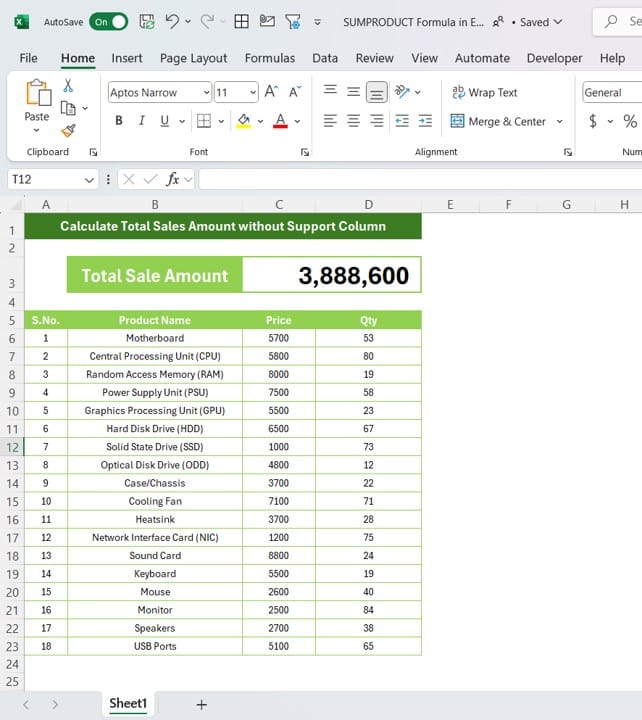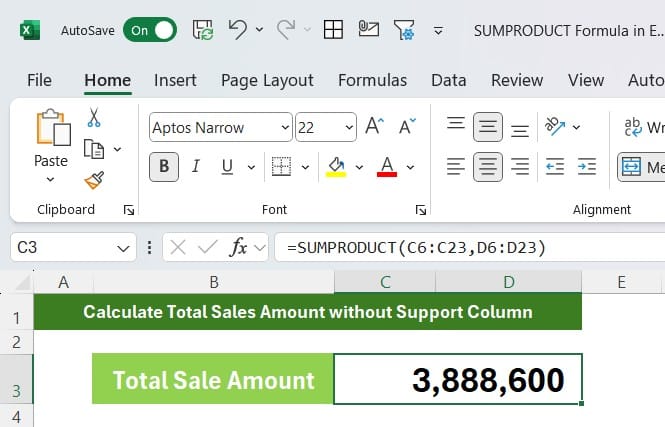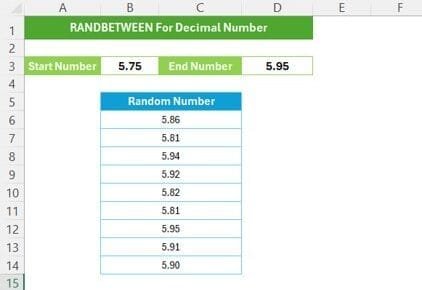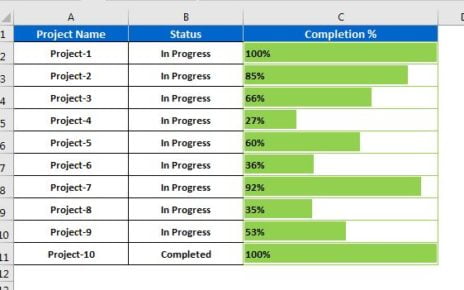Are you tired of creating extra columns just to Calculate Total Sales Amount in Excel? Well, you’re in luck! In this blog post, we’ll walk you through how to use Excel’s SUMPRODUCT Formula function to Calculate Total Sales Amount without any support column. This method is efficient, saves time, and keeps your worksheet neat and clean.
Let’s dive into how to do this with a real example.
Understanding the Data
We’ll be using the following data to demonstrate the power of the SUMPRODUCT function. Our data consists of four columns: S. No., Product Name, Price, and Quantity.
Each row lists a product, its price, and the number of units sold (quantity). The goal is to calculate the total sales amount using the SUMPRODUCT function—without creating an extra support column.
What is the SUMPRODUCT Function?

Before we go further, let’s break down the SUMPRODUCT function. In simple terms, this function multiplies corresponding elements in given arrays (or ranges) and then adds up the results. It’s particularly useful for tasks like Calculate Total Sales Amount without having to create additional helper columns.
Step-by-Step Guide to Calculate Total Sales
To calculate the total sales amount, we will multiply the Price and Quantity of each product and sum the results. Here’s how you can do it step by step:
-
Select the Cells Containing Price and Quantity
In our example, the Price data is in Column C (C6), and the Quantity data is in Column D (D6). We will use these ranges in our formula.
-
Write the SUMPRODUCT Formula
In any empty cell, type the following formula:
=SUMPRODUCT (C6:C23, D6:D23)
-
Press Enter and Get the Total
After pressing Enter, Excel will instantly calculate the total sales amount by multiplying each price with its corresponding quantity and then summing the results.
The Result
For our dataset, the formula will output a total sales amount of:
Total Sales Amount: 3,888,600
That’s it! You’ve Calculate Total Sales Amount without creating any extra columns, thanks to the SUMPRODUCT function.
Why Use SUMPRODUCT?

There are a few key reasons why SUMPRODUCT is the perfect choice for this task:
- Efficiency: No need for support columns or additional steps.
- Accuracy: Handles large datasets without manual errors.
- Simplicity: One formula does it all in a clean, straightforward way.
Conclusion
Using the SUMPRODUCT function in Excel is a game-changer for anyone looking to calculate totals quickly and efficiently. In our example, we showed how to compute total sales amount without using a support column, and you can apply this method to other calculations involving multiplication and addition.
So, the next time you want to avoid clutter in your Excel sheets, remember to give the SUMPRODUCT function a try—it’s fast, effective, and keeps your data clean!
Let us know if this method helped you! For more Excel tips and tricks, don’t forget to check out our other blog posts and videos.
Visit our YouTube channel to learn step-by-step video tutorials
View this post on Instagram
Click hare to download the practice file



